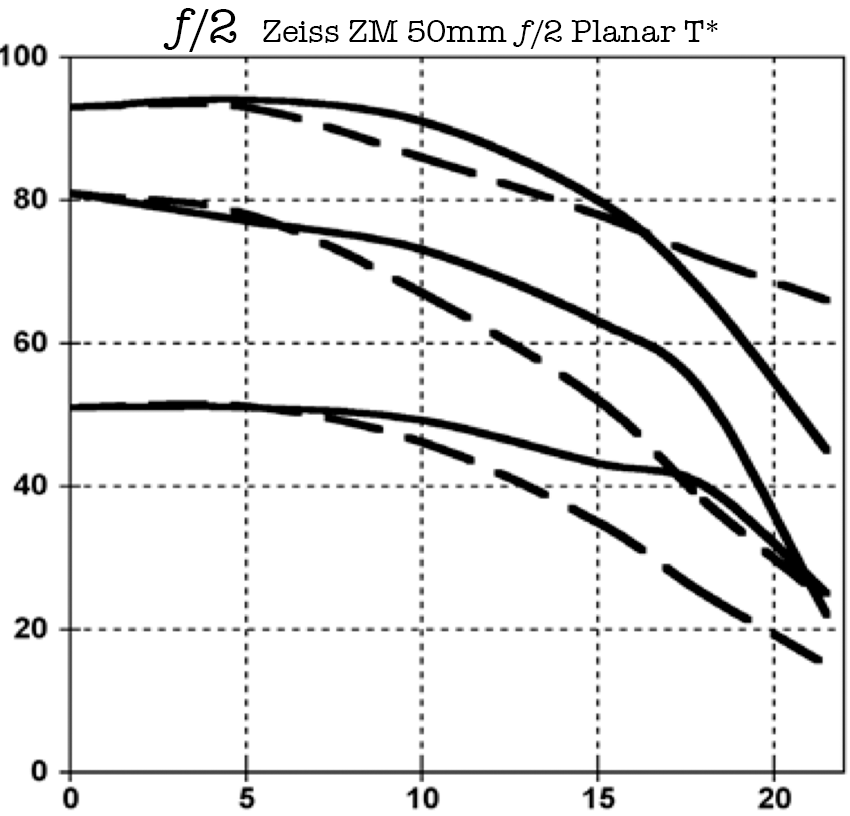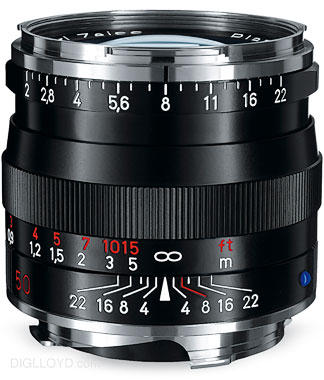EXCERPT page containing first few paragraphs. 2024-04-19 12:52:14
UA_SEARCH_BOT_compatible_botmozilla/5.0 applewebkit/537.36 (khtml, like gecko; compatible; claudebot/1.0; +claudebot@anthropic.com) @ 3.143.23.176
For full access, subscribe here. Or click title to login. ![]()
MTF: ZM 50mm f/2 Planar
Wide open at f/2, contrast at f/2 for coarse structures is high, falling gracefully to the corners. Contrast on fine structures is very good at center, but becoming somewhat hazy to the edges an corners, again, gracefully.
Stopping down to f/4 raises contrast of coarse and fine structures to outstanding levels to the edges of the frame, but with a sharp dropoff to the corners (probably field curvature involved).
Astigmatism is very well controlled, and the close sagittal and tangential curves suggest a high level of control of lateral chromatic aberration — minimal color fringing.
The lower contrast in the center at f/4 relative to the mid zones is most likely a mild focus shift combined with some field curvature. The lens is actually sharper at the mid zones and edges than the center (but only in a planar sense).
Article continues for subscribers...
Diglloyd Guide to Leica is by yearly subscription. Subscribe now for about 25 cents a day ($90/year).
BEST DEAL: get full access to ALL 8 PUBLICATIONS for about 75 cents a day!
Diglloyd Guide to LEICA contains in-depth coverage of Leica M system cameras and lenses, with additional coverage of Leica M Monochrom, Leica Q.
Special emphasis is placed on Leica M lenses and certain Zeiss ZM lenses.
- Make better images by learning how to get the best results right away.
- Save money by choosing the right lens for your needs the first time, particularly the Summilux/Summicron/Elmarit choice and/or Zeiss ZM.
- Make better images, a sort of “cheat sheet” saving yourself months or years of ad-hoc learning. Processing parameters are discussed and shown.
- Jaw-dropping image quality found nowhere else utilizing Retina-grade images up to full camera resolution, plus large crops [past 2 years or so].
- Real world examples with insights found nowhere else. Make sharper images just by understanding lens behavior you won’t read about elsewhere.
- Aperture series from wide open through stopped down, showing the full range of lens performance and bokeh.
- Optical quality analysis of field curvature, focus shift, sharpness, flare, distortion, and performance in the field.
Want a preview? Click on any page below to see an excerpt as well as extensive blog coverage, for example on Leica.



